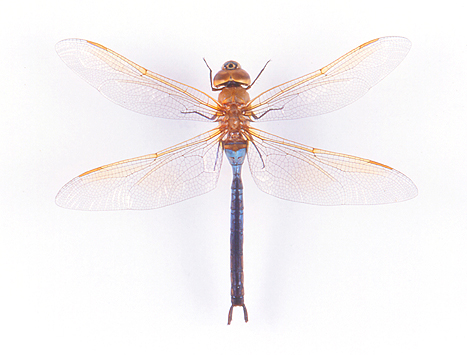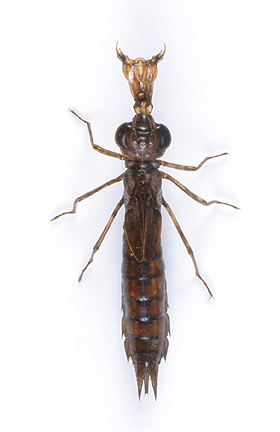Green Darner Dragonfly AKA The Mosquito Hawk (Anax junius)
Pricing: Dead (spread, as pictured): $40-$60 depending on quality.
Geographic Range: Canada to Panama, West Indies, Hawaii, Tahiti & Eastern Asia
View: Top Sex: Male
Size: Wingspan: 11 cm
Availability Notes: Blue coloration is difficult to preserve after death.
Anax junius is, perhaps, North America's most recognized dragonfly (Washington has it as their state insect). Large and attractive, it is also among the fastest of the dragonflies. A. junius are dimorphic in coloration. Both sexes have a green thorax but males have a blue abdomen while the females' abdomens are purplish-gray. The common name "Mosquito Hawk" is derived from its endless appetite for mosquitoes, marking this dragonfly as a true ally of humans. A. junius are on the wing all year round in the warmer, southern parts of their range. In the north, they can be seen April through September. Around late September, they begin to aggregate in open fields, feasting on the last of the late summer mosquitoes and midges. These individuals may linger into late fall if the weather remains warm (some have been spotted flying as late as December) but otherwise, they head south for the winter. This migration is poorly understood and the phenomenon invokes many unanswered questions, including how far these insects travel. Hundreds may be seen on the move in a single day, a fact noted by many hawk-watchers, some of whom have suggested that the migration of these large insects provide an important food source for hawks (hawks migrate south at the same time). At any rate, the wandering habits of Anax junius bring them north again every spring, marking them as the first dragonflies to appear in the spring (the robins of the insect world). It should be added that A. junius is an incredible long-distance flyer. Although it's presence on several Pacific islands is proof alone, we would like to add to this the fact that in September of 1998 the remnants of Hurricane Earl delivered at least 10 A. junius, alive and well, to Cornwall and the Scilly Isles in England! A. junius is one of the few species of insects to have reached - and colonized - the Hawaiian Islands. The A. junius now living in Hawaii have consistently shorter abdomens, a fact that may qualify them as a distinct race. A. junius has also crossed the Bering Sea and taken up residence in Eastern Asia, where it is found from the Kamchatka peninsula in Russia, south to Japan and eastern China. An image of its aquatic larva is shown below.


